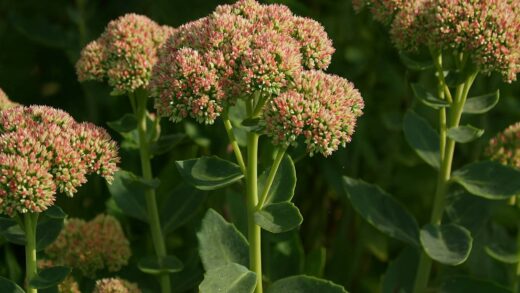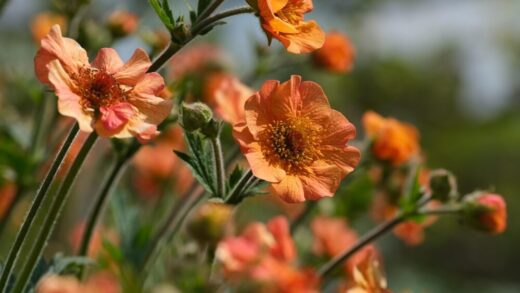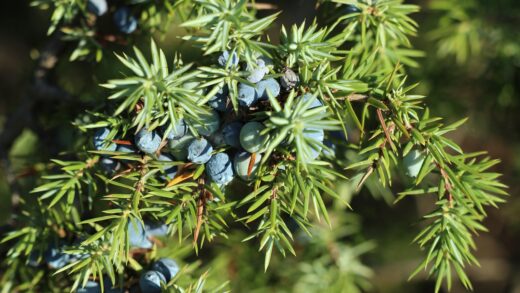Pruning is a fundamental horticultural practice that, when applied correctly to the Chinese juniper, plays a vital role in shaping its aesthetic form, maintaining its health, and controlling its size. Unlike many deciduous shrubs that can be rejuvenated through hard cutting, junipers possess a unique growth habit that demands a more thoughtful and precise approach. They do not produce new growth from old, leafless wood, meaning any cut made into the interior “dead zone” of the plant will create a permanent bare spot. Therefore, the principles of pruning must be understood and respected to avoid irreversible damage. The goal is not to dominate the plant, but to work with its natural tendencies, making selective cuts that enhance its structure, improve its vigor, and ensure its lasting beauty in the landscape.
The primary reason for pruning a Chinese juniper is to maintain its health. This involves the regular removal of any branches that are dead, damaged, diseased, or rubbing against each other. This practice, often referred to as “cleaning,” can be performed at any time of year whenever a problem is noticed. Removing dead wood not only improves the plant’s appearance but also eliminates potential habitats for pests and overwintering sites for disease pathogens. When pruning diseased branches, such as those affected by tip blight, it is crucial to make the cut several inches back into healthy, green tissue and to sterilize the pruning tools between each cut with rubbing alcohol or a 10% bleach solution to prevent the spread of the disease.
Another key objective of pruning is to control the size and shape of the juniper, ensuring it remains in proportion to its surroundings. The best strategy for size management is to start early in the plant’s life, performing light, selective pruning annually rather than waiting until the plant becomes severely overgrown. This involves thinning out some of the outer branches to reduce the overall spread and height. By making careful cuts, the plant’s size can be managed without resorting to shearing, which often leads to an unnatural shape and a dense outer canopy that shades out the interior foliage, exacerbating the formation of a central dead zone.
Improving air circulation and light penetration throughout the plant is also a critical goal of pruning, directly impacting the juniper’s long-term health. A dense, tangled mass of branches creates a stagnant, humid microclimate within the canopy, which is an ideal breeding ground for fungal diseases. By selectively thinning out some of the branches, particularly in the most congested areas, air can move more freely through the plant, allowing the foliage to dry more quickly after rain. This also allows more sunlight to reach the inner parts of the plant, which can help to keep the interior foliage alive and green for longer.
Essential pruning tools and their use
Having the right tools is essential for making clean, precise cuts that heal quickly and minimize damage to the plant. The most important tool for pruning junipers is a pair of sharp, high-quality bypass pruners. Bypass pruners have two curved blades that pass by each other like scissors, making a clean cut that does not crush the plant tissue. They are ideal for cutting smaller branches, typically up to a half-inch in diameter. It is vital to keep the blades sharp and clean to ensure their effectiveness and to prevent the transmission of disease.
For branches that are too large for hand pruners, typically between a half-inch and one and a half inches in diameter, a pair of loppers is the appropriate tool. Loppers are essentially long-handled bypass pruners that provide greater leverage, allowing for easier cutting of thicker branches. The long handles also provide extended reach, which can be useful for getting into the center of a larger juniper without having to climb into it. As with hand pruners, keeping the blades sharp and clean is paramount.
When faced with branches that are too large for even loppers, a pruning saw is required. Pruning saws are specifically designed to cut on the pull stroke, which gives the user more control and results in a cleaner cut on green wood. They come in various sizes and styles, including curved blade saws and folding saws. When using a saw on a larger branch, it is often best to use the three-cut method to prevent the weight of the branch from tearing the bark down the side of the trunk. This involves making an undercut first, followed by a top cut further out on the branch, and finally the finishing cut close to the trunk or main branch.
Hedge shears, whether manual or powered, should generally be avoided when pruning Chinese junipers. While they may seem like a fast and easy way to shape the plant, shearing only removes the outermost layer of green growth. This practice encourages a dense shell of foliage on the exterior of the plant, which blocks sunlight from reaching the interior. Over time, this leads to the death of all the inner foliage, creating a large dead zone. If the sheared outer layer is ever cut back too far, the unsightly dead interior will be exposed, and since junipers do not regenerate from old wood, the damage is permanent.
Timing pruning for optimal health
The timing of pruning can have a significant impact on the juniper’s health and response to the cuts. The best time for most structural pruning and size reduction is during the plant’s dormant season, which is typically in late winter or very early spring, just before new growth begins. Pruning during dormancy minimizes stress on the plant, as it is not actively growing, and the loss of foliage is less impactful. The wounds also have the entire growing season to begin the process of healing and sealing over. Furthermore, the absence of deciduous leaves on surrounding plants can make it easier to see the juniper’s branching structure and make more informed pruning decisions.
A second window for light pruning and shaping is in the late spring or early summer, after the initial flush of new growth has occurred and has started to harden off. This is a good time for tip pruning to encourage bushiness or for light shearing of specific cultivars that tolerate it, such as those used in formal topiary. Pruning during this period allows for the quick removal of the fresh growth to maintain a neat appearance throughout the summer. However, heavy pruning should be avoided at this time, as the plant is actively photosynthesizing and transpiring, and the removal of a large amount of foliage can be stressful.
It is critically important to avoid pruning Chinese junipers in the late summer or early fall. Pruning during this period can stimulate a flush of new growth at a time when the plant should be preparing for winter dormancy. This tender new growth will not have enough time to mature and harden off before the first hard frost arrives. As a result, it is highly susceptible to being killed by the cold, which can leave the plant with unsightly dead tips and can waste valuable energy reserves that the plant needs to survive the winter and fuel its growth in the following spring.
The one type of pruning that can be done at any time of year is the removal of dead, damaged, or diseased wood. There is no benefit to leaving this type of material on the plant, as it can harbor pests and diseases that could spread to the healthy parts of the juniper. When a broken branch or a branch showing signs of blight is discovered, it should be removed immediately, regardless of the season. This sanitation practice is a key component of maintaining the ongoing health of the plant.
Techniques for shaping and structural pruning
The most effective technique for pruning Chinese junipers is selective thinning. This method involves following a branch back from the tip to a point of origin, such as where it joins a larger branch or the main trunk, and removing it completely at that junction. This type of cut is less noticeable and preserves the natural shape and character of the plant. Thinning cuts are used to reduce density, improve air circulation, control size, and direct growth. By removing entire branches, the plant’s energy is redirected to the remaining branches, encouraging healthier, stronger growth.
When shortening a branch, it is essential to cut back to a live lateral branch or a significant green side shoot. This is known as a reduction cut. The cut should be made just outside the point where the side branch emerges, leaving no stub. The remaining lateral branch will then become the new terminal leader for that part of the plant, continuing the growth in a natural-looking way. This technique is used to control the spread and height of the juniper without leaving ugly stubs or creating the sheared, “poodle-ball” effect. It is a fundamental technique for maintaining a naturalistic form.
Tip pruning, or pinching back the soft new growth in the spring, is a technique used to increase the density and bushiness of the foliage. This can be done by hand or with pruners, simply removing the last inch or so of the new, bright green shoots. This removes the terminal bud, which stimulates the lateral buds further back on the stem to grow, resulting in a fuller, more compact plant. This is a much better method for creating density than shearing, as it works with the plant’s natural growth pattern and does not create a thick outer shell of foliage.
When undertaking a significant structural pruning on an older, overgrown juniper, it is best to approach the task gradually over a period of two to three years. Attempting to remove too much of the plant’s live foliage—generally no more than one-quarter to one-third of the total green growth—in a single season can be extremely stressful and may permanently harm the plant. By spreading the pruning out over several seasons, the plant has time to recover and respond to the cuts, allowing for a more sustainable and successful rejuvenation of its shape and structure.
Rejuvenation pruning for overgrown specimens
Rejuvenating a severely overgrown Chinese juniper is a challenging task that must be approached with realistic expectations. Due to the fact that junipers cannot sprout new growth from old, bare wood, it is not possible to perform a hard rejuvenation pruning in the same way one would with a forsythia or lilac bush. Cutting an overgrown juniper back hard into the central dead zone will simply kill the plant or leave it with large, permanent bare patches. Any attempt at rejuvenation must be done carefully, working only with the existing green foliage.
The first step in tackling an overgrown juniper is a thorough cleaning. Reach into the plant and remove all the dead branches and accumulated debris from the interior. This alone can dramatically improve the plant’s appearance and health by increasing light penetration and air circulation. Once the dead material is cleared out, the true structure of the plant becomes visible, allowing for a better assessment of what live branches are available to work with. This cleaning process often reveals that the plant has a more open and interesting structure than was initially apparent.
The next phase involves a careful and gradual process of structural thinning, spread out over two to three years. The goal is to reduce the overall size and density of the plant by selectively removing some of the longest and most cumbersome branches. Trace these branches back to their point of origin on the main trunk or a major limb and remove them entirely. This will create “windows” in the canopy, allowing more light to reach the interior and encouraging the remaining foliage to become denser. The focus is on reducing the plant’s footprint while preserving as much green growth as possible.
In cases where a juniper has become so overgrown that its lower branches are completely bare and it has lost its desirable shape, sometimes the most realistic option is removal and replacement. While this may seem like a drastic measure, trying to salvage a juniper that has grown too large for its space and developed a massive dead interior is often a losing battle. It can be more effective in the long run to replace it with a new plant, choosing a cultivar whose mature size is appropriate for the location. This prevents the problem from recurring and allows for a fresh start with a healthy, well-proportioned plant.




















